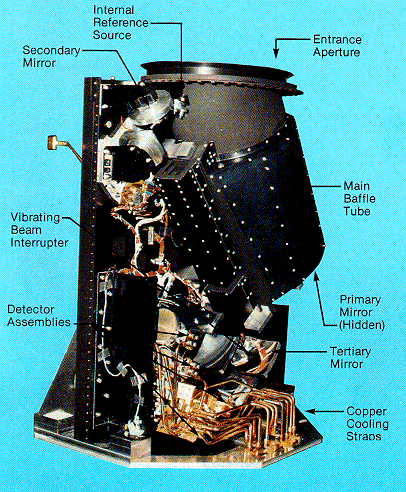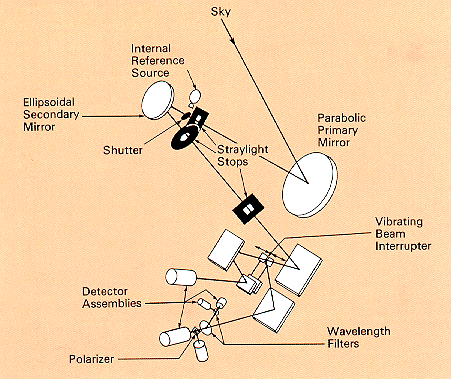

The COBE Diffuse Infrared Background Experiment (DIRBE)
The primary aim of the DIRBE is to conduct a definitive search
for an isotropic CIB radiation and to measure its energy distribution.
Secondary objectives include studies of foreground astrophysical
sources: scattered sunlight and thermal radiation from the
interplanetary dust, thermal emission from interstellar dust,
and Galactic starlight. The observational approach is to make
absolute brightness maps of the full sky at ten wavelengths
from 1.2 to 240 microns (see table below), and to map linear
polarization at 1.2, 2.2, and 3.5 microns.
* Assumes source spectrum nu*I(nu) = constant.
The DIRBE instrument operated at cryogenic temperatures for ten months, from 24 November 1989 to 21 September 1990, mapping the full sky with high redundancy during the first six months, and covering most of the sky with similar redundancy during the following four months. After the cryogen ran out, the DIRBE continued to provide photometric and polarimetric data, at reduced sensitivity, in the near-infrared until the instrument was turned off in December 1993. For detailed information about the experiment, instrument calibration, and data products, see the DIRBE Explanatory Supplement. Results of the search for the cosmic infrared background are reported in papers by Hauser et al. (1998), Kelsall et al. (1998), Arendt et al. (1998), Dwek et al. (1998), Fixsen et al. (1998), Dwek and Arendt (1998), Gorjian, Wright, and Chary (2000), and Wright and Reese (2000). The Bibliography of COBE Team Publications provides links to a number of other papers describing the results of non-cosmological DIRBE data analyses.
|



